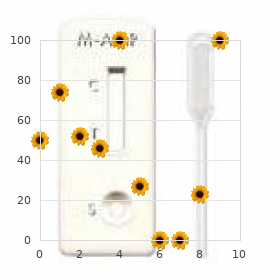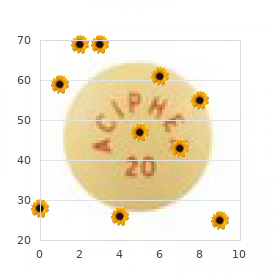"Generic leukeran 2mg mastercard, uterine cancer symptoms nz".
By: N. Rozhov, M.A., M.D., Ph.D.
Professor, UCSF School of Medicine
Order leukeran with a mastercard
Although results from these studies are promising, additional appropriately designed studies with a larger number of women are needed to evaluate the accuracy of the breast-specific gamma cameras. Articles: One published study with the Dilon 6800 camera was identified (Brem et al. One published study was identified that stated it used the LumaGem gamma camera to detect breast cancer in women with normal mammograms and clinical examinations (Coover et al. A second, more recent study with 40 patients (Rhodes, 2005) may have used this or a similar technology, but the authors only stated that they used a prototype gamma camera. No studies were identified that used commercially available cameras to image patients in situations suggested by a manufacturer including patients dense breast tissue, multiple suspicious lesions or clusters of microcalcifications. Occult breast cancer: Scintimammography with high-resolution breast-specific gamma camera in women at high risk for breast cancer. Scintimammography with dedicated breast camera detects and localizes occult carcinoma. Back to Top Date Sent: 3/24/2020 182 these criteria do not imply or guarantee approval. The authors indicated that this is not statistically significant; however, they used a qualitative rather than a quantitative approach to determine significance. Kaiser also reviewed this technology on March 23, 2009 and came to similar conclusions. One of the prospective studies included a comparison group and was selected for review. Gamma Imaging with 99mTc-Sestamibi and Magnetic Resonance Imaging in the Diagnosis of Breast Cancer-A Comparative Study. This study was not selected for review due to methodological limitations (small sample size, patient selection criteria and baseline characteristic were not addressed, and confidence intervals were not provided) (Ozulker 2010). The use of breast-specific gamma imaging in the diagnosis of breast cancer does not meet the Kaiser Permanente Medical Technology Assessment Criteria. Back to Top Date Sent: 3/24/2020 183 these criteria do not imply or guarantee approval. Criteria For Medicare Members No review required for Medicare members For Non-Medicare Members Canaloplasty is covered when all of the following criteria have been met: 1. Diagnosis of glaucoma with eye pressures inadequately controlled on maximum tolerated topical medications and laser treatment 2. Documented risk for greater problems with standard glaucoma surgery (trabeculectomy or valve implant) as defined by one of the following:
Generic leukeran 2mg mastercard
These bone segments are mobilised either as free bone segments, completely detached from the soft tissues, or pedicled to the soft tissues to retain their blood supply. In most cases the so-called "access osteotomy" is combined with a conventional craniotomy. Facial incisions are avoided wherever possible the coronal scalp flap and intraoral incisions providing adequate exposure in many cases. If facial incisions are necessary, these are carefully sited and will usually heal with an imperceptible scar. Maxillofacial Surgeons, by virtue of their training in surgery of the facial bones and soft tissues, have contributed significantly to the development of the surgical access techniques now in common practice. Sophisticated imaging techniques accurately identify both the position and dimensions of lesions and, in some cases, correctly diagnosing their nature. Interventional radiologists can reduce the blood supply of tumours and vascular abnormalities further decreasing the potential morbidity of surgery, which at times allows surgeons to treat previously inoperable lesions. The recent development of "navigation" systems enables surgeons to pinpoint their position in three dimensions at the time of surgery, which is of particular value where the pathology has destroyed the usual anatomical landmarks. The selective use of minimally invasive techniques and focused radiosurgery will also become more common as the limits of such techniques are appreciated. Notwithstanding these developments, adequate access to skull base pathology will remain an essential requirement for successful surgical treatment. The data drives a laser over a bath of photosensitive resin which produces a series of stacked slices, and an accurate three-dimensional industrial prototype or model. These so-called bio-models can be extremely useful in a number of particular clinical situations involving bony facial deformities, as this process allows the accurate visualisation of the facial skeleton. It is an invaluable aid to both the diagnosis and treatment planning of congenital, developmental and post-traumatic conditions affecting the facial region. In particular, it allows the maxillofacial surgeon to appreciate spatial displacements in all three dimensions and to make accurate measurement of the deformity. The correction of post-traumatic or development facial asymmetry has always been difficult. Great accuracy is required to achieve a successful surgical result, due to the fact that facial deformity and asymmetry is often the result of relatively small magnitudes of bony displacement or deformity. The surgeon is then able to practice the surgery on the model, thereby allowing full appreciation of the osteotomy bone cuts required to achieve the desired results, together with any areas which may require augmentation with bone grafts. Valuable theatre time can be saved, by allowing the pre-operative of bone plates to be used for fixation on the "post-operative" bio-model that demonstrates the planned realignment of the facial bones.

Order leukeran 2mg fast delivery
Intralesional triamcinolone acetonide injection for primary and recurrent chalazia (is it really effective? Incision and curettage vs steroid injection for the treatment of chalazia: a metaanalysis. However in some cases breast reduction surgery is necessary where large breasts impact on day to day life, for example ability to drive a car. Breast reduction surgery is a procedure used to treat women with breast hyperplasia (enlargement), where breasts are large enough to cause problems like shoulder girdle dysfunction, intertrigo and adverse effects to quality of life. Unilateral breast reduction is considered for asymmetric breasts as opposed to breast augmentation if there is an impact on health as per the criteria above. Surgery can be approved for a difference of 150 200gms size as measured by a specialist. This recommendation does not apply to therapeutic mammoplasty for breast cancer treatment or contralateral (other side) surgery following breast cancer surgery, and local policies should be adhered to. The Association of Breast Surgery support contralateral surgery to improve cosmesis as part of the reconstruction process following breast cancer treatment. This recommendation does not cover surgery for gynaecomastia caused by medical treatments such as treatment for prostate cancer. Breast reduction surgery for hypermastia can cause permanent loss of lactation function of breasts, as well as decreased areolar sensation, bleeding, bruising, and scarring and often alternative approaches. The applicability and predictive value of breast-related symptoms questionnaire in measuring breast related symptoms pre and postoperatively. The impact of breast reduction surgery on low-back compressive forces and function in individuals with macromastia. Heimberg, D, et al, 1996, the tuberous breast deformity: classification and treatment, Br J Plast Surg, 49, 339-45. This can occur as part of the natural aging process, or pregnancy, lactation and substantial weight loss. This policy explicitly relates to correction of inverted nipples for cosmetic reasons. It may occur at any time and there are a number of causes, some physiological and others pathological. Patients can self-fund options such as shaving, waxing, depilatories (hair removal creams) and bleaching creams. It should be noted however that eflornithine cream has Black status on the Pan Mersey formulary and is not recommended for prescribing. Evidence for British Association of Dermatologists hirsuitism patient information leaflet inclusion and Weblink: threshold.

Buy leukeran online
Driver rehabilitation excels at the prescription of and training in the use of strategies, devices, or vehicle modifications to compensate for a wide range of physical and somatosensory impairments. Thus, physically frail older adults may not have limitations in continuing to operate a motor vehicle. The amount of muscle strength and range of motion necessary to physically operate a vehicle has decreased, although basic motor skills and abilities are still needed. Endurance: Before the act of driving, motor abilities are needed to enter the car safely and fasten the seat belt. The natural process of aging may involve a decline in muscle strength and endurance, flexibility, and joint stability. In addition, osteoarthritis and other musculoskeletal problems are common in older adults. Individuals who suffer pain and limitations from these conditions may not only experience direct effects on their driving ability but also decrease their physical activity, causing further decline in motor function. Fatigue can be an issue for older adults who are driving a long distance, have undiagnosed sleep apnea, or advanced functional loss from severe end organ disease. Range of motion in the neck is essential so that the driver can turn his or her head quickly to check the blind spot; however, resources are available to compensate for this functional limitation. Although muscle strength is less of an issue with newer vehicles, older adult drivers should have functional range of motion that permits reaching for pedals and the steering wheel with little or no pain. Proprioception: Drivers must have the ability to know whether their foot is on the brake or accelerator pedal. It would be easy for a driver to become confused if he or she had to “look” to see where his or her foot was in order to drive. Clearly, older adult drivers with sensory issues such as diabetic neuropathy would benefit from a test of leg and foot proprioception. Refusal of Assessment Older adult drivers and their caregivers may express fear, resistance, or refusal to participate in screening or assessment of functional abilities. The three most common reasons are the older adult’s belief that he or she is a good driver, there is fear the outcome may put the older adult’s license at risk, and/or the older adult and/or caregiver has impaired insight. Caregivers may have conflicting priorities when trying to balance their respect for the older driver’s wishes, level of risk, and the caregiver burden that cessation of driving can create, including responsibility in time or money for transporting the older adult to appointments and activities. In these situations, it may be helpful to assure the older adult that the concern and focus is on prevention and optimizing driving ability and not on removing the ability to drive. Health care providers, considering clinical observations and using best judgment, may decide there is cause for concern but not an immediate risk. The goal might be to initiate a conversation with the older adult and ideally with the caregiver about driving safety. It will be important to discuss, with permission, the medical condition(s) of the older adult and the potential impact these can have on driving safety. The first steps may focus on increasing self-awareness and a shared understanding of driving risk for self and others.
Order leukeran with a mastercard. Cancer & Virgo Sexual & Intimacy Compatibility.

